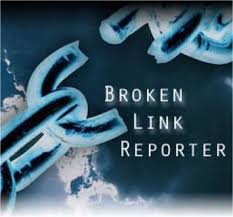
and trouble for Banks!
A landmark ruling in a recent Kansas Supreme Court case may have given millions of distressed homeowners the legal wedge they need to avoid foreclosure. In Landmark National Bank v. Kesler, 2009 Kan. LEXIS 834, the Kansas Supreme Court held that a nominee company called MERS has no right or standing to bring an action for foreclosure. MERS is an acronym for Mortgage Electronic Registration Systems, a private company that registers mortgages electronically and tracks changes in ownership. The significance of the holding is that if MERS has no standing to foreclose, then nobody has standing to foreclose – on 60 million mortgages. That is the number of American mortgages currently reported to be held by MERS. Over half of all new U.S. residential mortgage loans are registered with MERS and recorded in its name. Holdings of the Kansas Supreme Court are not binding on the rest of the country, but they are dicta of which other courts take note; and the reasoning behind the decision is sound.
Eliminating the “Straw Man” Shielding Lenders and Investors from Liability
The development of “electronic” mortgages managed by MERS went hand in hand with the “securitization” of mortgage loans – chopping them into pieces and selling them off to investors. In the heyday of mortgage securitizations, before investors got wise to their risks, lenders would slice up loans, bundle them into “financial products” called “collateralized debt obligations” (CDOs), ostensibly insure them against default by wrapping them in derivatives called “credit default swaps,” and sell them to pension funds, municipal funds, foreign investment funds, and so forth. There were many secured parties, and the pieces kept changing hands; but MERS supposedly kept track of all these changes electronically. MERS would register and record mortgage loans in its name, and it would bring foreclosure actions in its name. MERS not only facilitated the rapid turnover of mortgages and mortgage-backed securities, but it has served as a sort of “corporate shield” that protects investors from claims by borrowers concerning predatory lending practices.
FOR COMPLETE ARTICLE: Ellen Brown, September 19th, 2009

Copyright @ 1998-2009
All Rights Reserved
This site contains copyrighted material the use of which has not always been specifically authorized by the copyright owner. We are making such material available in our efforts to advance understanding of environmental, political, human rights, economic, democracy, scientific, and social justice issues, etc. We believe this constitutes a 'fair use' of any such copyrighted material as provided for in section 107 of the US Copyright Law. In accordance with Title 17 U.S.C. Section 107, the material on this site is distributed without profit to those who have expressed a prior interest in receiving the included information for research and educational purposes. For more information go to: http://www.law.cornell.edu/uscode/17/107.shtml. If you wish to use copyrighted material from this site for purposes of your own that go beyond 'fair use', you must obtain permission from the copyright owner.





No comments:
Post a Comment
Please feel free to add your comments on the topic at hand. No advertising or profanity please. Thanks for participating.